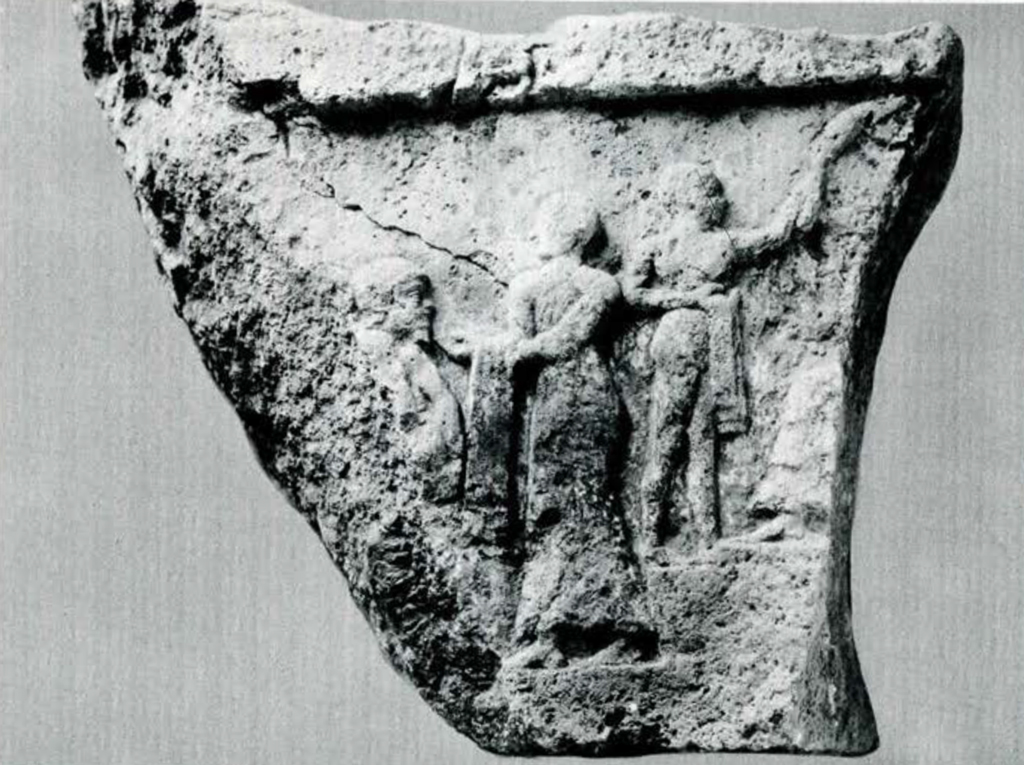THE most important single object found at Ur during the season now closed is a considerable fragment [Plate V] of the Stela of Ur-Nammu, the founder of the Third Dynasty of Ur who largely remodelled the Ziggurat in the form in which we know it. Unquestionably the outstanding monument so far found at Ur, the Stela of Ur-Nammu records the achievements of this great Sumerian king. The various scenes depicted on it have been described before (Museum Journal, March 1927) and the stela itself, with the various fragments assembled as accurately as may be, has for some time been on display in the Museum. It is our good fortune to be awarded the recently found fragment, which upon its arrival here will be fitted into the reconstructed whole. This fragment seems to belong either to the bottom or to the middle register of the reverse face. It depicts the king (whose head and one arm are preserved) coming before a god, a seated figure on a raised base (only the feet, part of the skirt, and part of the base remaining), while between them are two priests, one of whom has a fly whisk and the other a folded cloth.

Museum Object Number: B16676.29
Towards the end of the season a deep pit was excavated close to the royal tombs. Here were found first a dozen inscribed tablets and numerous fragments, and over a hundred seal-impressions. The tablets, of archaic period, are most valuable for the study of the development of cuneiform script, while the seal-impressions are of many varieties. At a lower level in the pit over a hundred and thirty graves were found, many of them belonging to the Jemdet Nasr period-so-called after a site near Kish in Mesopotamia-and others with pottery of somewhat later date. The sequence is much more interesting than an unmixed Jemdet Nasr period cemetery would be, and the finding of some twenty skulls sufficiently preserved for study will add considerably to the material of the period available for anthropological research. Notable among the various objects found in the graves was the large number of stone vessels; for the most part these were plain, but one small white limestone cup was decorated with a row of lions and bulls carved in relief, the first example of this genre that we can date, and date fairly accurately, to an early period.

